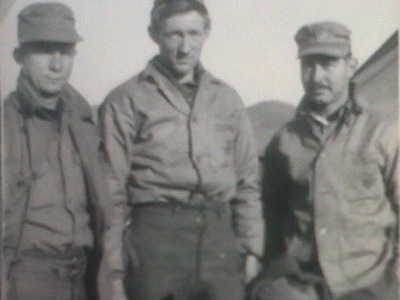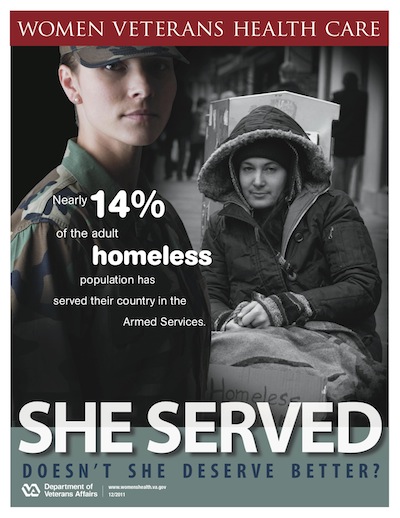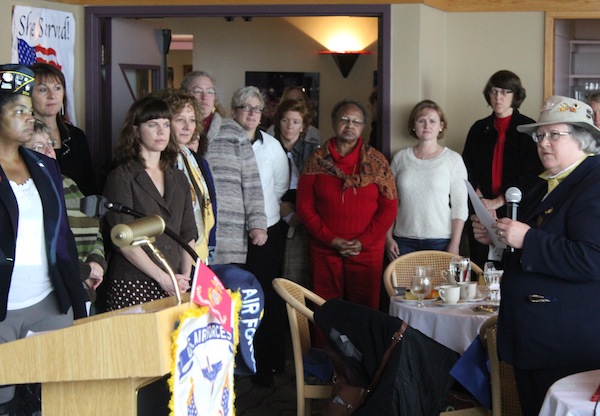Written by Denise Miller, Firesteel Advocacy Coordinator
Each Veterans Day, I think about my grandfather, who served as a Marine in the Korean War and passed away when I was a baby. I was still young when my dad showed me a piece of shrapnel that had entered my grandfather’s leg, and the Purple Heart he received as a result. As a teenager, I connected with my grandfather through letters and photos he had sent home from the war.

I loved seeing hints of my dad’s face in the shots of my grandfather posing handsomely in his uniform and goofing around with his battalion. But the many battlefield images were painful to look at; all the indescribable horrors of war were captured in black and white. Living through those experiences left my grandfather with scars, both physical and psychological. My dad remembers hearing his father scream in the middle of the night when flashbacks transported him back to the killing and suffering. Post-traumatic stress disorder (PTSD) was less understood then, and my grandfather’s way of coping with the pain was to ignore it.
He did have one important fact working in his favor, though: he was recognized as a veteran, and received all the benefits that went along with that status.
Yesterday, at a brunch honoring women veterans, I was reminded that not everyone who serves our country receives such recognition, and some are suffering as a result.
“People forget that women serve,” Navy veteran Tracy Feagiai-McNeal told me. “Organizations don’t ask women if they’re vets, but they ask men all the time.”
This means that women veterans who are grappling with financial problems, or with mental or physical challenges, might not be connected with services to which they are entitled — all because nobody thought to ask them if they were veterans.
Unique challenges
Many veterans — both men and women — need help making the transition from soldier to civilian. They sometimes struggle to translate their military skills into civilian job skills, and almost half of veterans are discharged from service branches with service-connected disabilities. Given these difficulties, it is perhaps not surprising that veterans are more likely than their civilian counterparts to experience both unemployment and homelessness.
As we’ve shared on this blog, women veterans are more likely than men to face certain barriers to housing stability, like coping with military sexual trauma (MST) and having their work options limited by the lack of affordable childcare.
The US Department of Veterans Affairs (VA) has made progress toward its goal of ending veteran homelessness by 2015; this is evidenced by a 12 percent decline in homeless veterans between January 2010 and January 2011. However, the number of homeless women veterans is rising, and women returning from service are the fastest-growing segment of the homeless population. An estimated 13,000 women veterans experience homelessness on any given day in our country.

Disabled American Veterans (DAV), an organization chartered by the United States Congress to help disabled military veterans and their families, recognizes that services and programs for homeless women veterans are lacking. For example, most transitional homes are designed for and available to men.
“Women veterans are more likely to enter homelessness while caring for their children, leaving few options for adequate transitional housing. And with roughly 40 percent of homeless women veterans reporting an incident of MST while in the military (double the rate of women veterans in general), housing options are wholly inadequate to meet their unique needs. The VA has begun to address this gap by establishing a few women-only and women-with-dependent-children homeless assistance efforts, but these pilots are in their infancy,” according to a DAV report called “Challenges We Face.”
Transitioning to civilian society: applying the military teamwork model
Air Force veteran Sheila Sebron spoke in a New Day Northwest interview about her own experience with homelessness, and the isolation she felt when she came home after her military service.
When I met Sheila yesterday at the brunch honoring women veterans, she told me that the military ethos of “suck it up and get it done” had contributed to her struggles with homelessness.
“That mindset is great when you’re in the military and on a team, because someone will automatically step up for you. But when you’re back and by yourself, you fall because you don’t reach out to the support systems,” she said.
Sheila told me that she’s been encouraged by progress made since the interview was taped two years ago.
“The difference now is that people are talking about women veterans, and there is so much more support and camaraderie,” she said. “You can see it right in this room.”
Around us, more than 100 people had gathered to honor women veterans. The event was organized by Outreach and Resource Services for Women Veterans, a Seattle-based nonprofit organization led by Julia Sheriden, a veteran of the US Marine Corps. Julia’s work helping veterans understand their rights and make claims is the type of peer-to-peer advocacy we need more of. Nobody understands what a woman veteran is facing better than a woman veteran does.
“Being able to connect and work together — it’s getting back to that military model of teamwork,” Sheila said.
The services and recognition they deserve
Sheila’s also pleased that the VA has taken steps to provide specialized care for women, noting that the Seattle VA now has a separate area reserved for women. Sheila used to feel uncomfortable getting eyed by men when she picked up medicine, but now she and other women are more at ease.
“Making that change helps all women, especially those with military sexual trauma, and it’s important,” she said.
She’d like to see more changes, including the hiring of more women as service officers. All the veterans I spoke with were working for a more widespread understanding of women veterans’ contributions to our society, and the challenges some face when they transition back to civilian life. We must connect women veterans to existing services, improve programs for women, and create new services designed to meet their specific needs.
On future Veterans Days, I will continue to remember my grandfather. I will also honor Tracy, Sheila, and all the other women who have made great sacrifices for our country. Today and all days, we should recognize the service that military men and women have contributed.
What you can do
- Learn more by watching “Service: When Women Come Marching Home.” This documentary about several women’s experiences during and after military service is available for free streaming for the month of November on World Channel.
- Are you part of a community or faith-based group? Acknowledge women veterans in your bulletins, and consider creating a safe space for them to connect within your organization. It can be as simple as a regular shared meal or manicure night.
- Contact your legislators, and tell them you want more funding for transitional homes specifically for women veterans.
